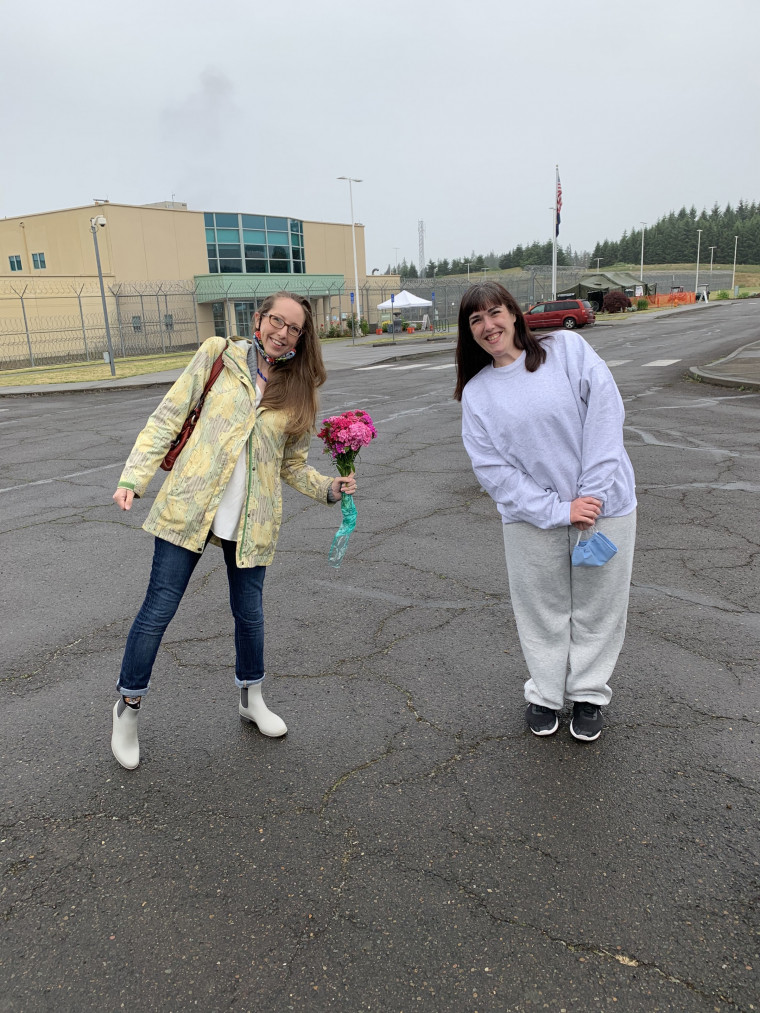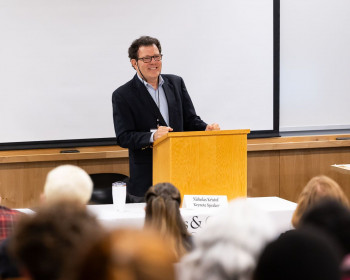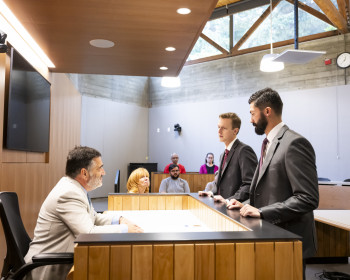Criminal Justice Reform Clinic Obtains 14 Clemencies Since April
Open gallery

The Criminal Justice Reform Clinic (CJRC) petitioned for and received an amazing 14 commutations for their clients since April of this year. CJRC also made Oregon history when Governor Kate Brown commuted its client to the Parole Board after reducing his sentence from Life Without Parole to Life, the first time such a commutation has happened in Oregon.
A clemency petition is a request to the Governor of the State to grant some relief from a prior court ordered sentence or punitive measure. There are two main methods through which clemency can be given—pardon or commutation of sentence. A commutation reduces an individual’s sentence, either fully or partially while a pardon exempts a convicted individual from any remaining punishment. CJRC’s commutations were granted to clients who had anywhere from two to seventeen years left on their sentence.
“The pandemic has hit Oregon prisons (and all prisons) hard in every possible way: there is no ability to social distance, many people are sick, and everyone is scared,” stated Professor Aliza Kaplan, Director of the CJRC. “Because of this, the Clinic is especially grateful that Governor Brown is making reviewing clemency cases a priority right now. We also could not be happier for our incredible CJRC clients who worked so hard while incarcerated and now have been reunited with their loved ones.”
CJRC’s work to advocate for individuals through clemency petitions has given their clients the chance to plan for their future. “My future plans are bright,” stated former CJRC client, Juliette McShane. “I was involved in a program at Coffee Creek which has employed me since the day I was released and I am able to support myself. I have also just gotten married and hope to start a family soon. After COVID, I am looking forward to going to a coffee house and meeting people, getting involved in group gatherings, and being involved in other activities that will further broaden my horizons.”
“My experience with the CJRC is nothing short of amazing, it is the reason I am no longer in prison,” stated former CJRC client, Josh Cain. “Aliza, Venetia , and all of the clinic students did an exceedingly thorough and professional job every step of the way. From the first interview we had to discuss whether or not they could take my case, through the continued check-ins and follow-ups since my release, I have always felt important to the clinic. Now I can move forward with my plans to complete my Master’s Degree, own a home, and travel.”
Clinic students played a key role in drafting and filing the clemency petitions while gaining valuable job skills. Students learn and practice important lawyering skills such as writing, legal and scientific researching, reviewing thousands of pages of case transcripts, interviewing clients, and presenting their findings in various forms to supervisors and decision makers. “The Clinic’s Clemency Project allows our students to have meaningful connections and relationships with people who have lived very different lives from theirs,” Kaplan said. “Students learn first hand how using their lawyering skills can truly change the course of someone else’s life (nevermind their own).”
“The highlight of my clinic experience didn’t come until more than a year after I had left the clinic–when Governor Brown granted the clemency petition I worked on and released our client,” former clinic student Alison Kavanagh ’20 stated. “She had received an exceptionally long sentence for her crime, and had grown into an intelligent, compassionate, and accomplished woman while incarcerated over the last decade. I am honored to have worked with her, and I’m excited to see what she accomplishes with this second chance at life.”
“Being part of CJRC was the best law school experience for me,” Grace White ’21 said. “It helped me figure out what I want to do with my law degree and part of that is due to the impact that representing a client requesting clemency had on me. I am grateful to Professor Kaplan and the admissions committee in the clinic for the opportunity to hone my skills and be part of really powerful work.”
“My first clemency client taught me so much about how to be more intentional in my work and how to be a better listener,” Natalie Hollabaugh ’21 said. “Clemency is often an emotional process and I learned how to share space, provide support, and ultimately tell the client’s story in a way that she not only felt comfortable with but proud of. I now have the pleasure of working on three additional clemency cases for youth and plan to continue pro bono clemency work in the future.”
“No matter how my situation could have turned out, I still would have been grateful for the opportunity to work with the CJRC,” stated the Clinic’s most recent former client to receive a commutation. “I would have been grateful regardless because they listened to me, they believed in me, they walked with me through my storytelling, they laughed with me and they even cried with me (when Governor Brown granted me clemency)! Being able to work with the CJRC was truly an amazing experience, especially because it is full of people who are dedicated and love to do what they do.”
Law Communications is located in room 304 of Legal Research Center (LRC) on the law Campus.
MSC: 51
email jasbury@lclark.edu
voice 503-768-6605
Cell: 626-676-7923
Assistant Dean,
Communications and External Relations, Law School
Judy Asbury
Law Communications
Lewis & Clark Law School
10101 S. Terwilliger Boulevard MSC 51
Portland OR 97219

